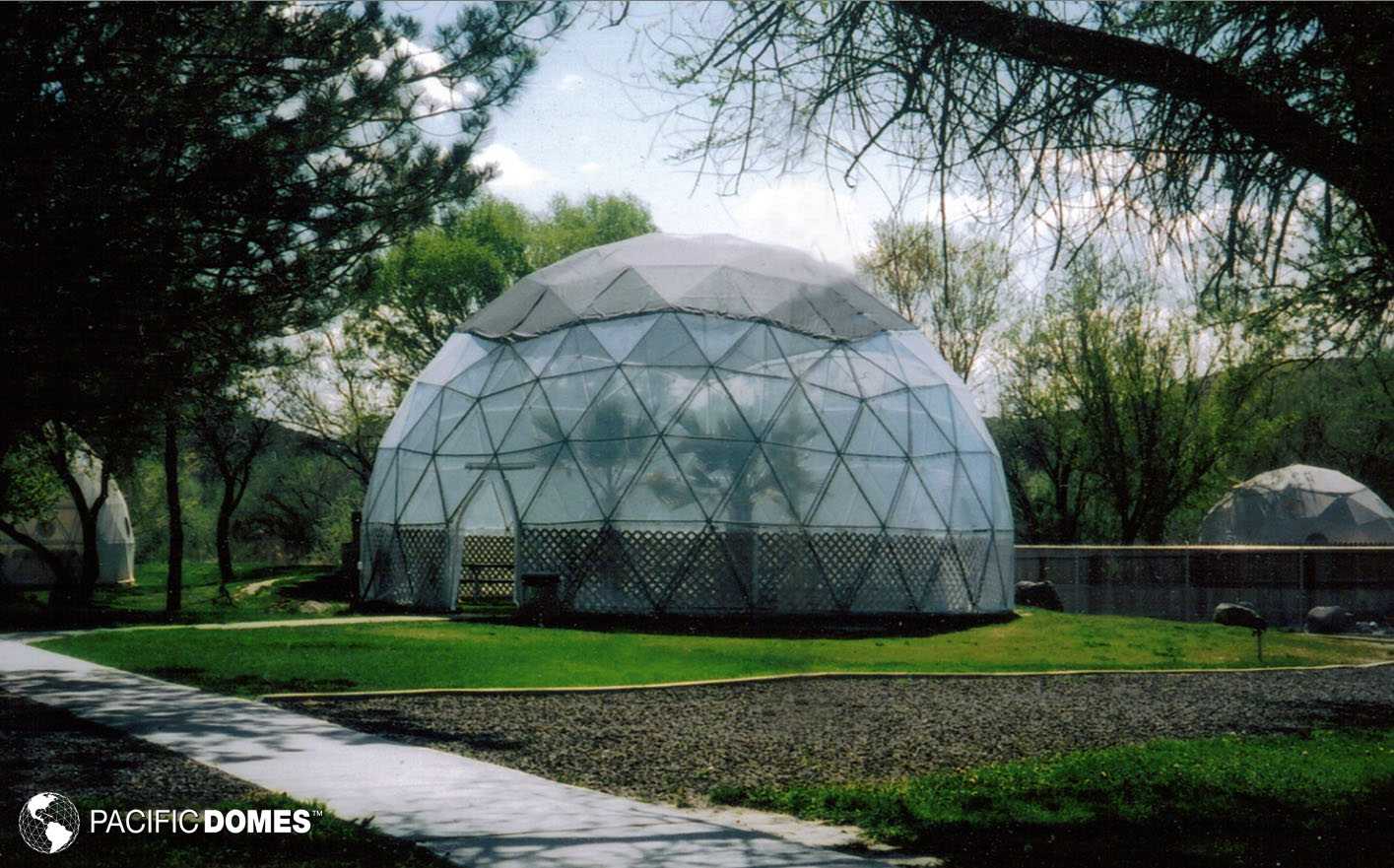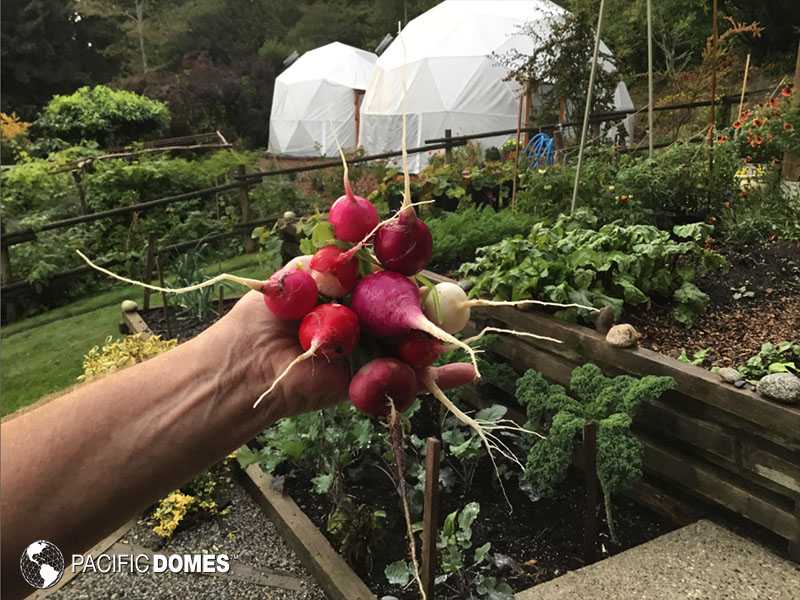In the event that your area requires a building permit, don’t let the application process stand between you and building your free-standing geodesic greenhouse. After 40+years in business, Pacific Domes has everything you need to support you through the building process and ensure your plans meet the strictest engineering standards and your local building codes. We’ve set a precedent by helping customers, just like you, get their greenhouse plans approved.
You might be surprised to learn that free-standing geodesic domes are considered temporary structures and many building departments may not even require permits. This is, especially true, when it comes to backyard greenhouse sizes in rural neighborhoods. Here’s why…
- Greenhouse domes don’t require a foundation.
- And, they are considered unoccupied agricultural structures.

Erring on the side of caution
Although, you may not agree with the concept of getting a building permit, it’s best not to start your greenhouse without prior inquiry. In general, you’ll find that zoning and building departments are very helpful.
In recent years, there has been a near universal adoption of some version of the International Building Code (IBC). Although, governing codes haven’t actually changed much, enforcement and issues that building officials may want to address has increased.
In many urban areas, if it’s 200 sq. ft. or larger, you will need a permit and inspections. Anything that requires a permit is also taxed.
Zoning, Building Codes and Permits
Step 1: Zoning laws vary widely. Talking to your zoning department before you build a greenhouse is a necessary first step. Also, you may not need a building permit, once you complete a zoning permit.
Step 2: Once you’re satisfied that your proposed greenhouse meets with any zoning restrictions, you will have to investigate county building codes with your building department. Building codes look at the structural integrity and the physical appearance of a building.
Several factors determine a planning permit for a greenhouse. It normally depends on:
- Your local building codes
- Your greenhouse design (whether it’s on a permanent foundation),
- Location (how close it is to property lines)
- Size – in general, larger greenhouses increase the likelihood that you will need a permit
- And, there may be restrictions on the number of buildings you can have on your property (not including your house); such as, permanent sheds, chicken coops or animal shelters.

Green-building
Next Step: Green-Building is sustainable building. When it comes to being resource efficient while exerting a light footprint, a geodesic dome greenhouse is considered to be environmentally responsible and good stewardship of earth’s resources. It’s advantageous to make your county zoning and building departments aware that you are building an eco-friendly structure with up to 50% energy savings – and, that Greenhouse domes are rated for high winds and heavy snow-loads!
Due to the fact that they spend most of their time dealing with residential, industrial and commercial buildings, many zoning and building departments have a limited understanding of greenhouse construction and environmental control systems That said, it’s up to you to educate frequently overworked officials by presenting professional looking site plans that will help them interpret code on your behalf.
Peace of Mind
Once you’ve purchased one of our greenhouse domes, our professional in-house team is happy to provide you with what you might need to satisfy any building permits:
- Geodesic-engineered blueprints (CAD drawings)
- Custom 3-D renderings
- Load-bearing and technical data for frames, covers, etc.
- Fire certificates
- Anchoring instructions and construction expertise, etc.
